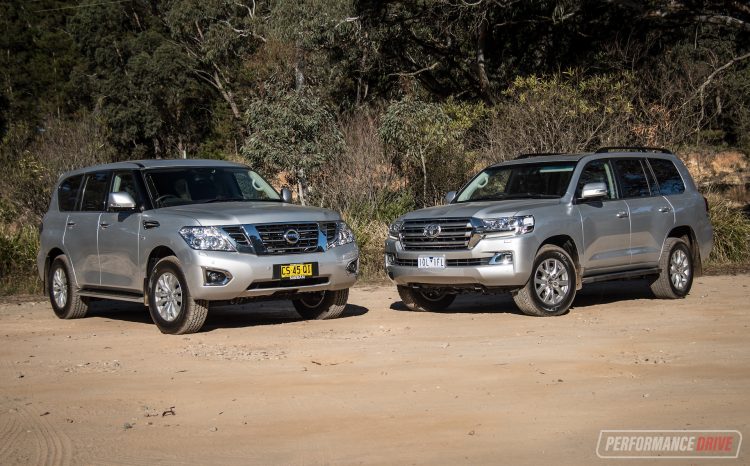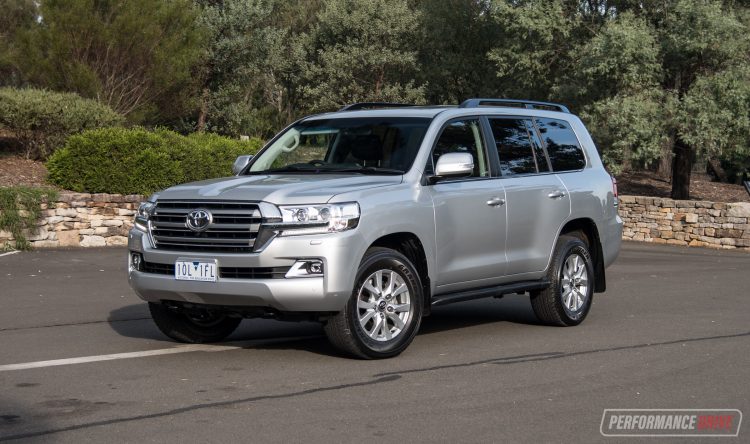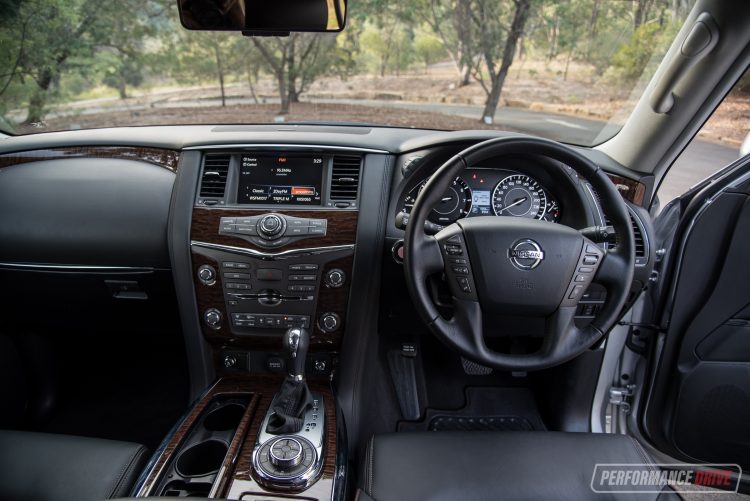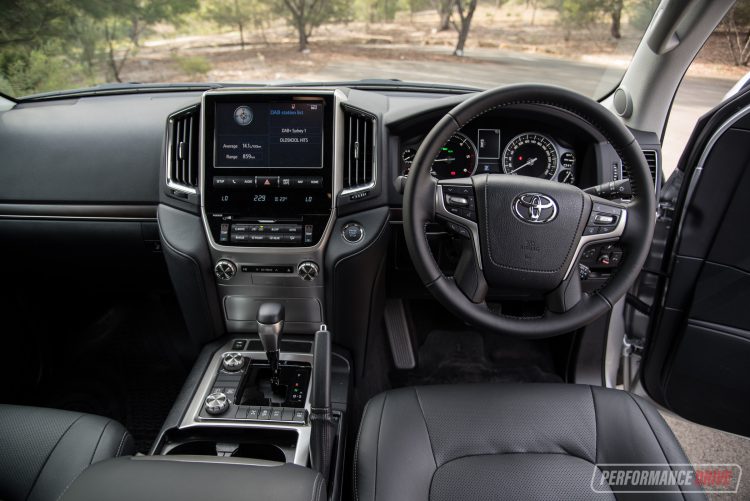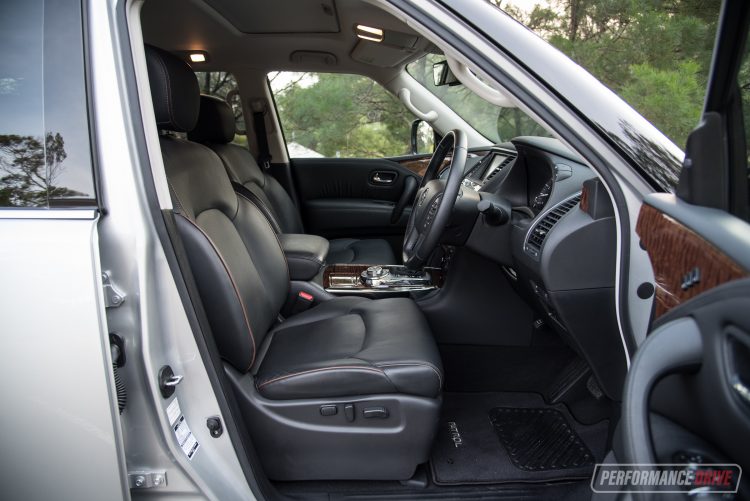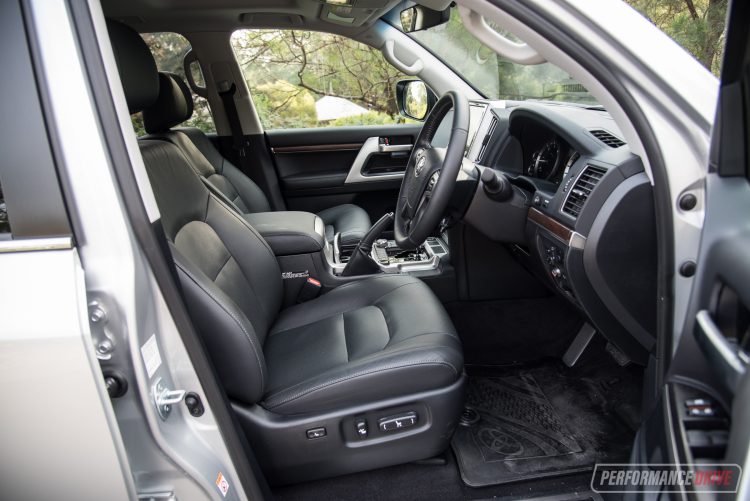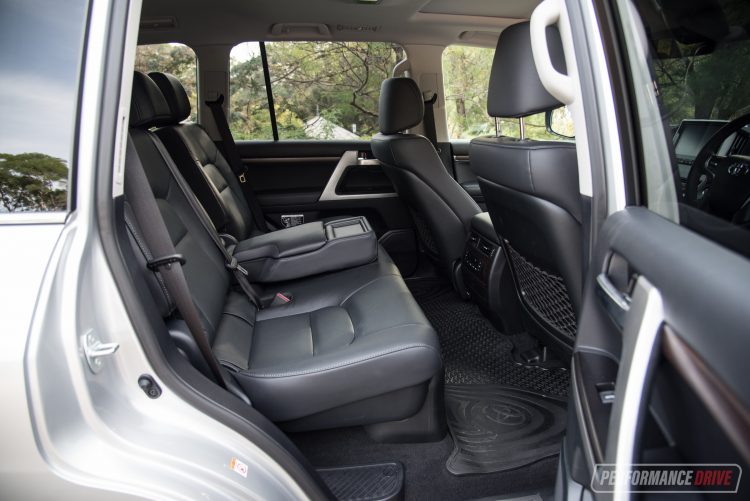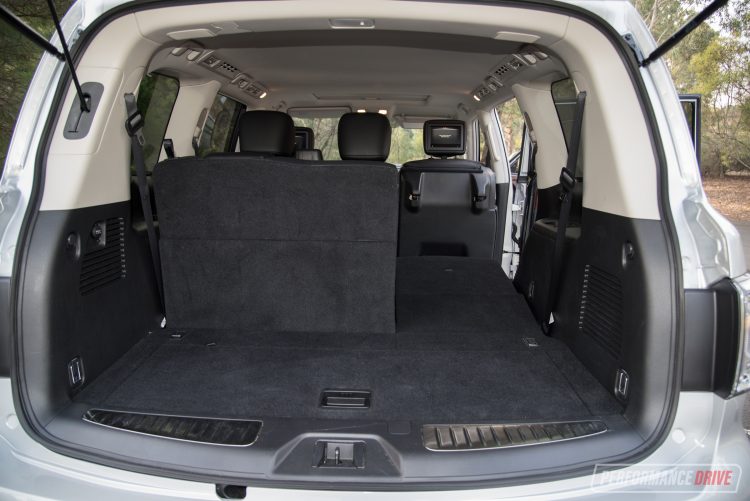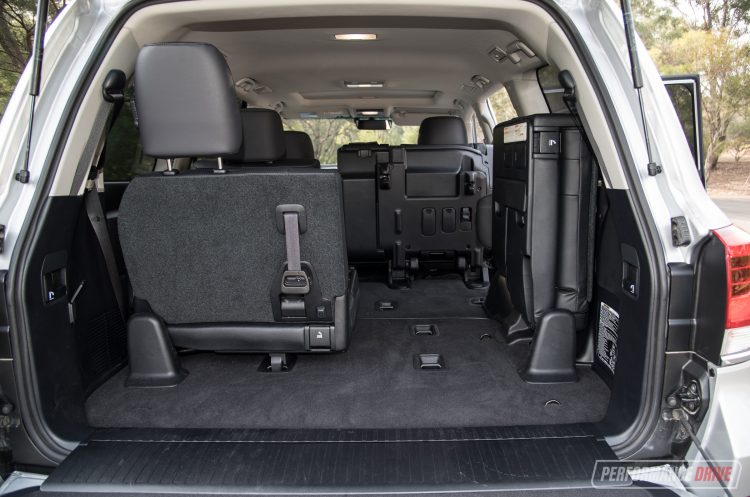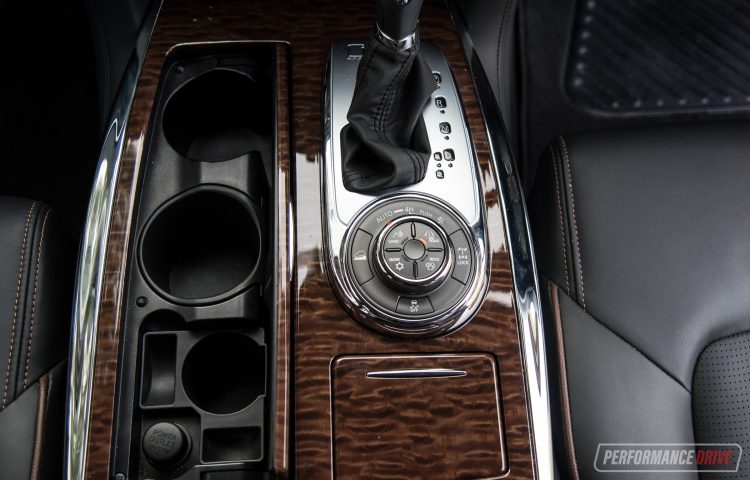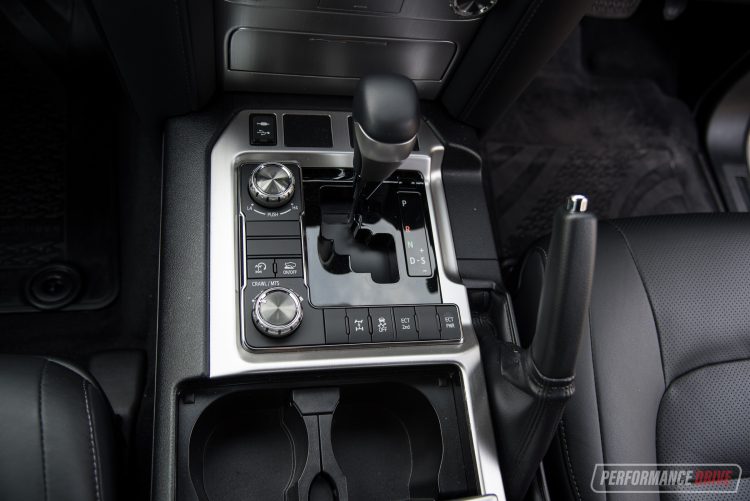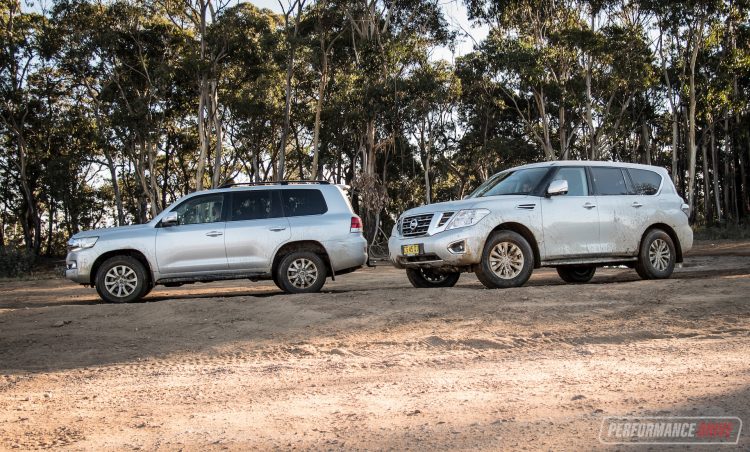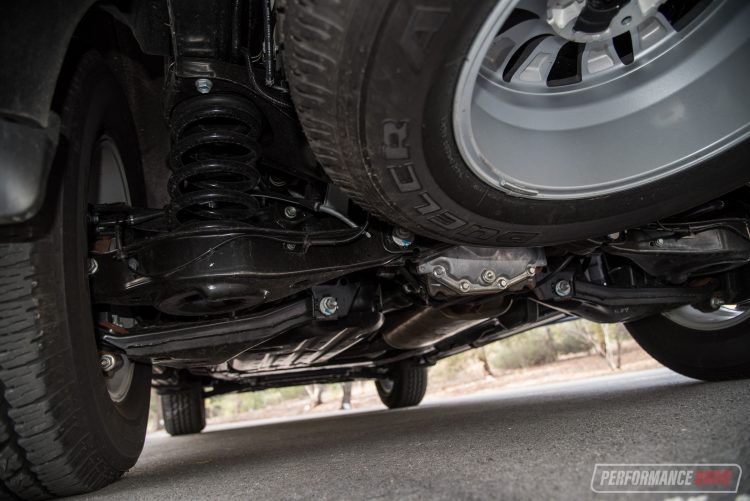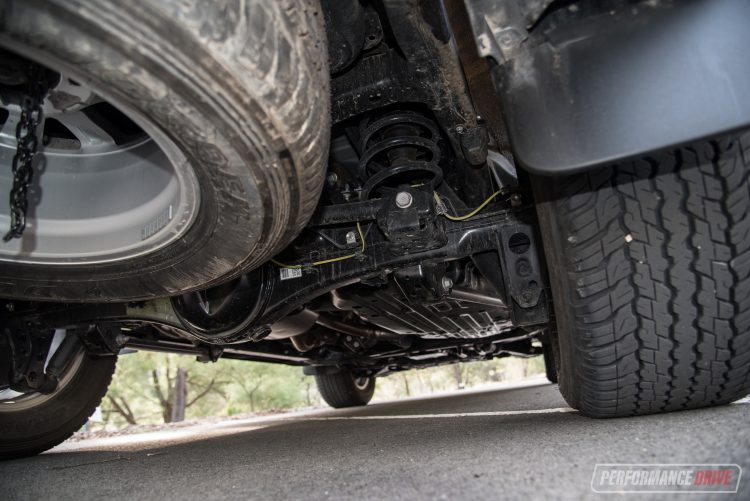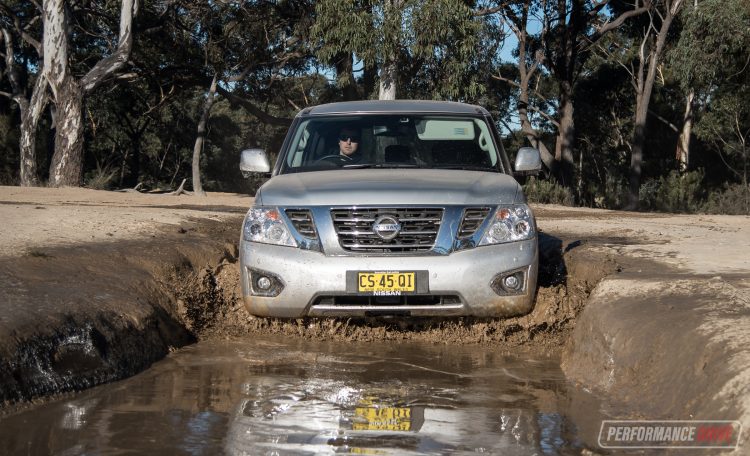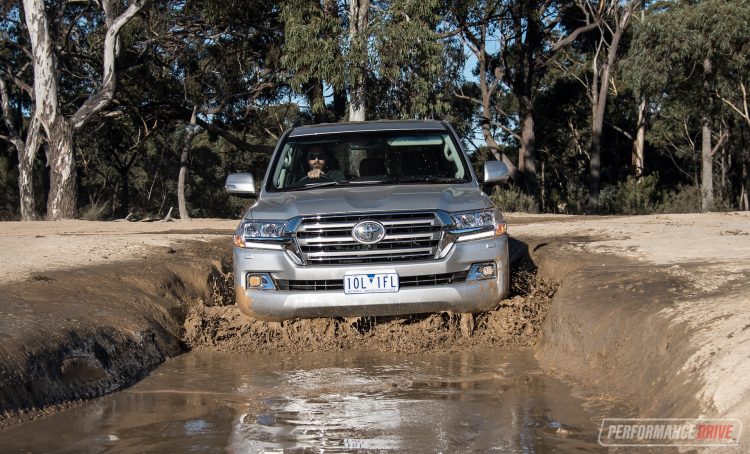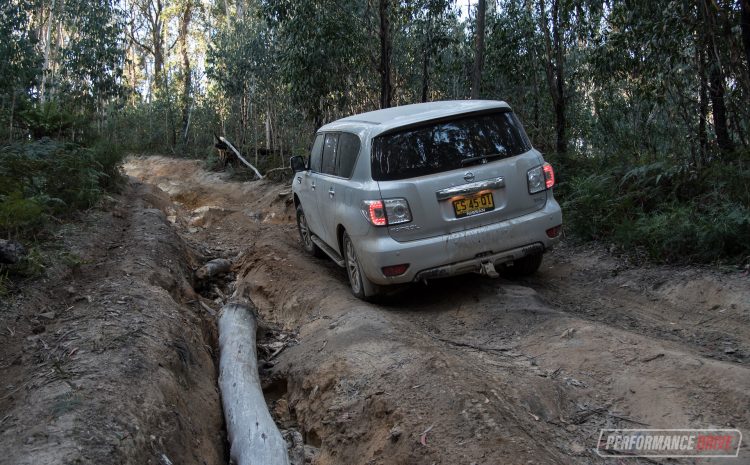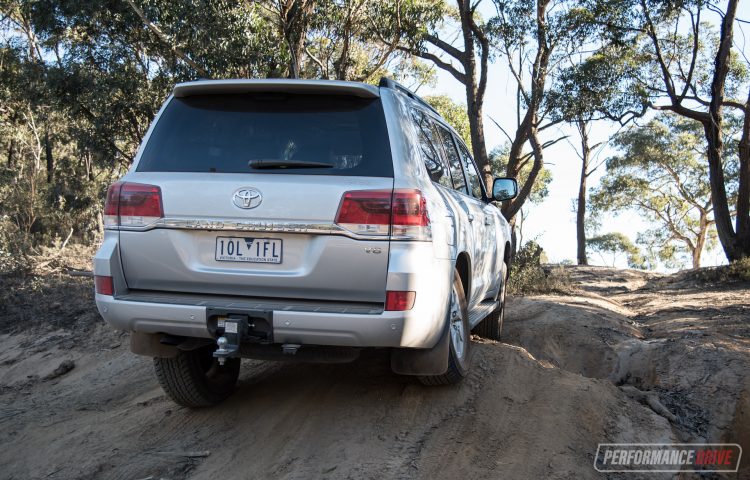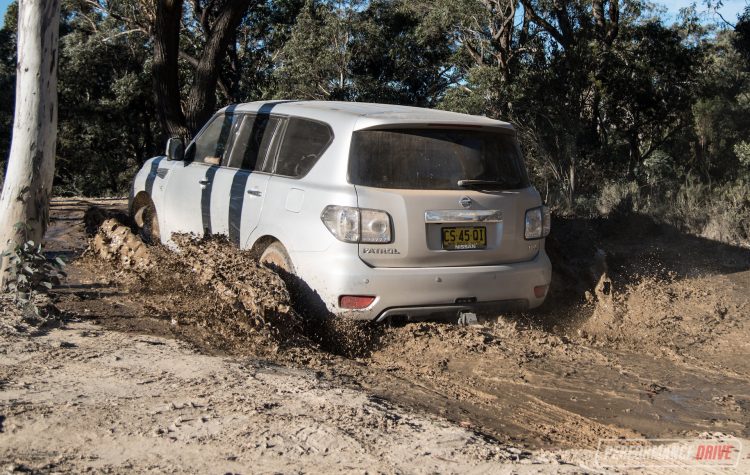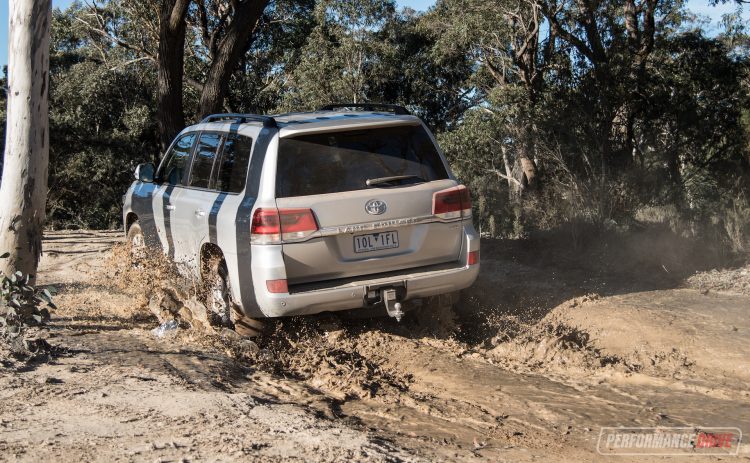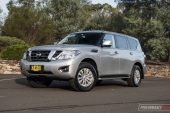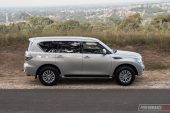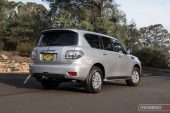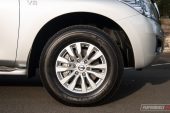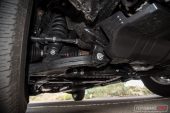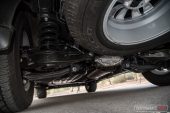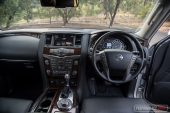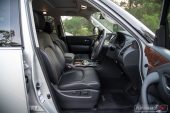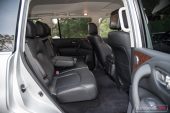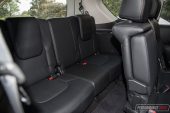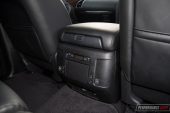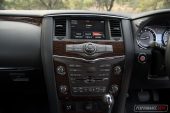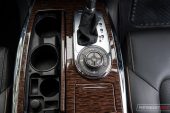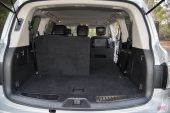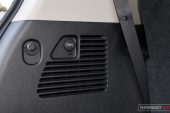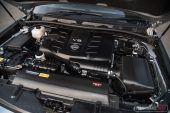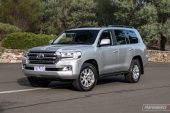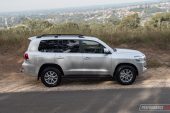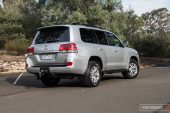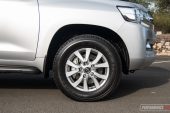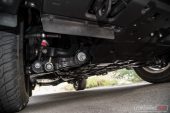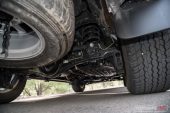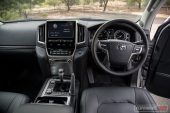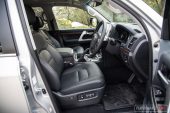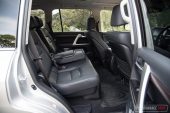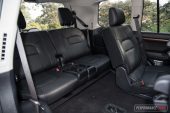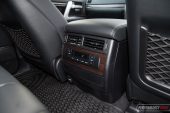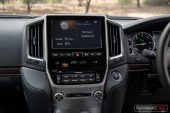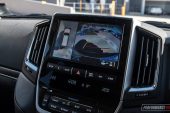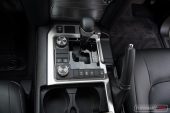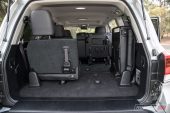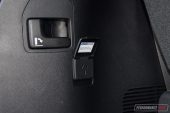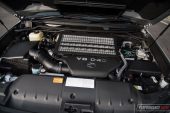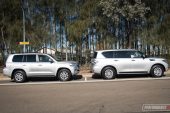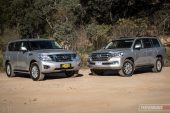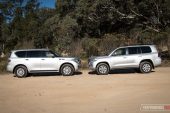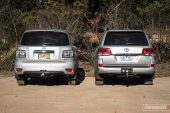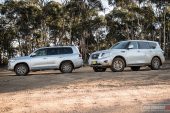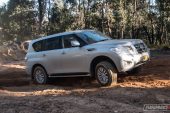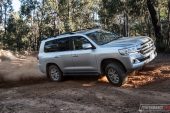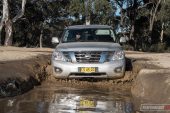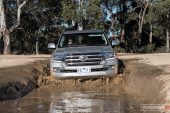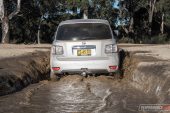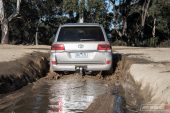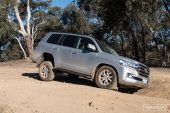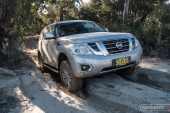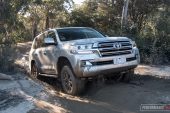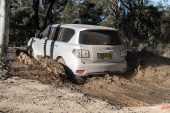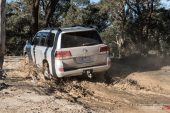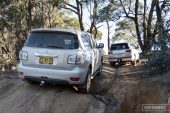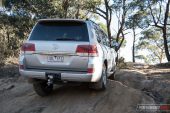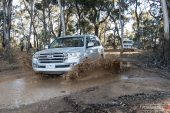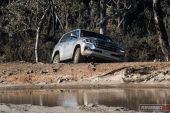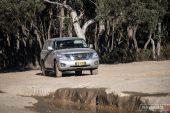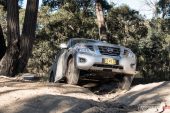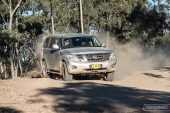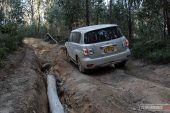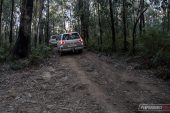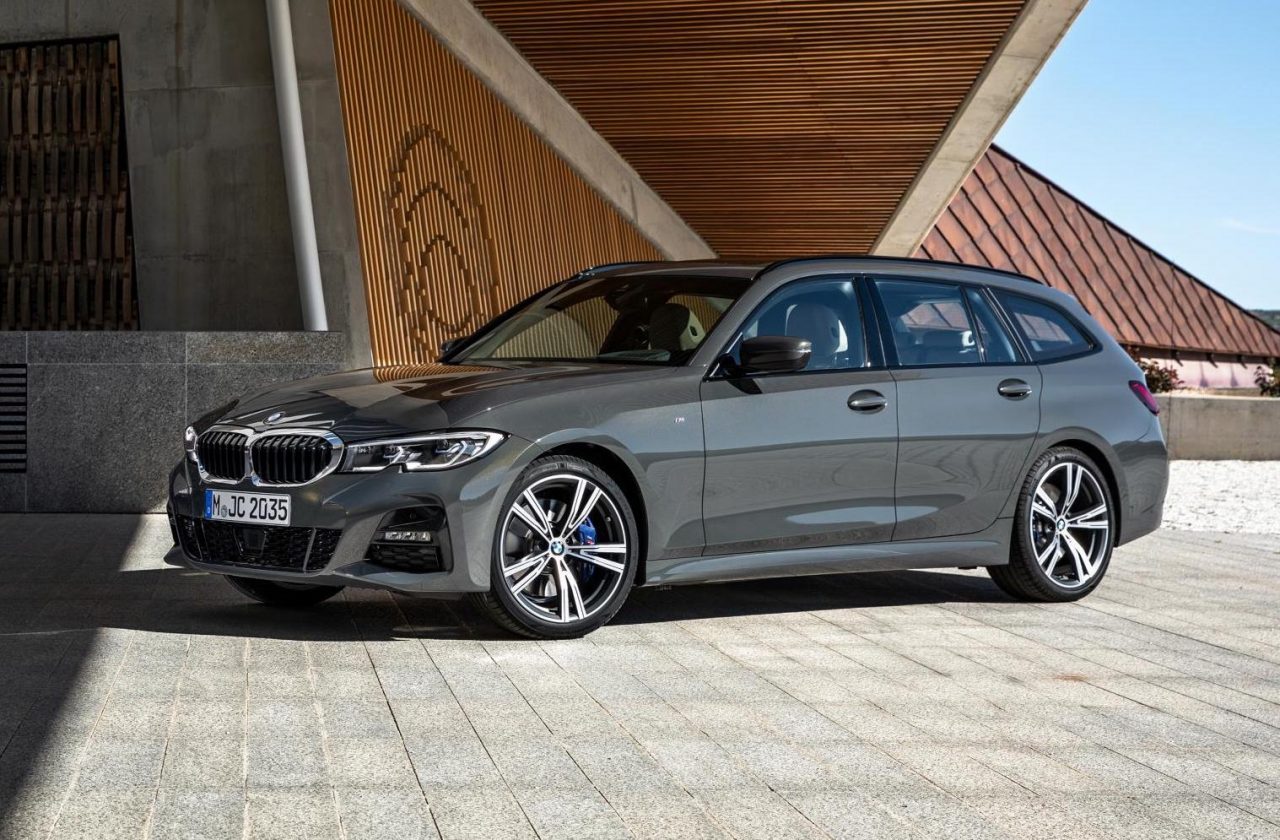| SPECS | PACKAGE | DRIVE | VERDICT |
These two have been battling it out for decades. Originally, they were the quintessential ‘four-wheel drive’. Over the years the Nissan Patrol and Toyota LandCruiser have morphed into becoming two of the largest SUVs on the market. They’re both infused with a lot more luxury as opposed to being almost purely utilitarian-focused, like they once were. But off-road performance is still paramount. In fact, they are often regarded as being two of the most component off-road production SUVs on the market.
For this comparison test we’re looking at the 2019 model (Y62) Nissan Patrol Ti-L and the (200 Series) Toyota LandCruiser VX. They aren’t perfect spec-for-spec rivals, but they are a good blend between sharing similar equipment levels and a similar cost. The Patrol Ti-L is the flagship and it’s now on sale in Australia from $89,880. The LandCruiser VX, sitting just below the flagship Sahara, is on sale from $99,632, which makes the Patrol look like quite a bargain (all excluding on-roads).
After digging around for some general background we see the Y62 Patrol has been around since 2010 in essentially the same form. Likewise, the LandCruiser 200 Series has been around for a while too; since 2007. However, Toyota did introduce a fairly major update in 2015 to freshen up the interior and exterior, and equipment and technology. Nissan also updated some of the technology since the initial debut, but not as significantly as the Toyota.
For all stacked images below, we’ve put the Nissan on top and Toyota straight below
2019 Nissan Patrol vs Toyota LandCruiser – THE SPECS
| 2019 Nissan Patrol | Toyota LandCruiser | |
|---|---|---|
| Engine | 5.6-litre petrol V8 | 4.5-litre twin-turbo V8 diesel |
| Output | 298kW@5800rpm / 560Nm@4000rpm | 200kW@3600rpm / 650Nm@1600-2600rpm |
| Transmission | Seven-speed auto | Six-speed auto |
| Drive type | Four-wheel drive, helical limited-slip centre diff, locking rear diff | Four-wheel drive, Torsen limited-slip centre diff with locking function |
| Wheels | F & R: 18×8.0, 265/70 | F & R: 18×8.0, 285/60 |
| ANCAP | Not tested | Five stars (scored 33.09 out of 37) |
| Tare weight | 2750kg | 2670kg |
| Power-to-weight | 9.22:1 (kg:kW) | 13.35:1 (kg:kW) |
| Official fuel economy | 14.4L/100km | 9.5L/100km |
| Economy during test | 19.2L/100km | 13L/100km |
| Fuel capacity/type | 140L/95 RON | 138L/Diesel |
| Power efficiency | 20.69kW:L/100km | 21.05kW:L/100km |
| 0-60km/h | 3.44 seconds* | 3.71 seconds* |
| 0-100km/h | 7.11 seconds* | 9.08 seconds* |
| 60-110km/h | 4.81 seconds* | 7.40 seconds* |
| 1/8 mile | 9.98 seconds at 123.7km/h* | 10.51 seconds at 107.7km/h* |
| 1/4 mile | 15.21 seconds at 152.1km/h* | 16.50 seconds at 133.0km/h* |
| Max acceleration | 0.680g | 0.865g |
| 100-0km/h braking | 3.28 seconds at 41.22 metres* | 3.36 seconds at 42.00 metres* |
| Max deceleration | -1.227g | -1.145g |
| Decibel at idle | 44* | 47* |
| Peak decibel at 60-100km/h | 88* | 74* |
| Priced from | $89,880 | $99,632 |
* Figures as tested by PerformanceDrive on the day. Factory claims may be different
2019 Nissan Patrol vs Toyota LandCruiser – THE PACKAGE
Jumping into the Nissan first. The cabin is upright and tall, and in that sense it seems like a more traditional four-wheel drive. Headroom and legroom is plentiful in the front, and the seats are mounted on tall brackets to give you a really perched up view of your forward surroundings. The Ti-L comes with an electronically-adjustable steering column and it is easy to find a natural driving position, regardless of your stature. Smaller drivers will immediately acknowledge the enormity of the vehicle as the bonnet is bulgingly huge and the dash and centre console are very chunky.
You can start to understand the Y62’s age just by looking around the dash and console, as it’s all covered in 1990s-themed wood and lots of shiny chrome. These trimmings were all the craze some years ago. But now they are quite a contrast to the matte finishes and even eco-friendly fibres that don more modern luxury cars. The 8.0-inch touch-screen media interface is also some years behind the current market standards, lacking Android Auto and Apple CarPlay, and the menu functionality and graphics are fairly rudimentary.
Stepping up into the LandCruiser now. Firstly, you’ll notice it is a bit more of a step up, literally. The cabin orientation seems more wagon-like, but with a raised floor no doubt helping to provide clearance under the vehicle for off-roading. Thanks to the major facelift in 2015, the dash design is much more modern in comparison, with softer tones such as metallic-like garnishes for the fascia and silver controls. The LandCruiser’s 9.0-inch touch-screen is superior in graphics and capability over the Nissan’s system, although it is still behind the market standards for pure functionality. It also misses out on Android Auto and Apple CarPlay.
The driving position isn’t quite as natural as the Patrol’s, and the steering column is manually-adjustable – remembering this is the VX. But we find the seats are a bit softer and wrapped in softer leather. However, the front seats don’t offer all that much lateral support. Toyota has fit a proper LCD screen within the instrument cluster for the trip information, comparing favourably over the Nissan’s tiny digital screen with calculator-like graphics.
Going for the Patrol Ti-L gets you a switchable cooler box for the centre console, which actually cools drinks and food, like a mini fridge. This option is available in the LandCruiser but only by stepping up to the flagship Sahara variant. The Nissan also comes with twin LCD screens in the backs of the front seat headrests for rear passenger entertainment. Again, the VX isn’t pitched as a complete spec-for-spec rival but it’s price tag doesn’t seem to reflect differences.
Speaking of the rear seat, the Nissan does present a grander and expansive atmosphere, with slightly more legroom. Unfortunately, neither models offer a sliding middle row bench so you can’t adjust the amount of legroom for the second and third rows. In this default position the Patrol does feel more comfortable in the back.
The lower floor provides some room for your legs to dangle down, while the LandCruiser’s raised floor lifts you feet somewhat. Toyota does offer thick rubber mats for the floor, including a properly moulded full-width mat for the middle row. This seems better suited to the rugged nature of these vehicles, compared with the Patrol’s conventional carpet mats. Again though, the Ti-L is pitched as the flagship and could be forgiven as it targets a higher end of the luxury spectrum.
Third row accommodation is very impressive in both. If you’re after a proper seven-seat SUV that can actually seat adults in the very back, you’re looking in the right place. The Nissan in particular offers good legroom and headroom, while the raised floor does seem to sap a bit of legroom in the Toyota. Also, the leftover cargo space is greater in the Nissan in the maximum seating configuration. On that note, the Toyota’s flip-up third row is cumbersome and requires some muscle, while the Patrol’s third row folds neatly into the floor.
In terms of the equipment and safety tech, the Patrol Ti-L comes with autonomous emergency braking and adaptive cruise control, while the Toyota doesn’t come with either. The Toyota does feature a comprehensive exterior camera system though with surround-view monitoring, just like the Patrol. However, the larger screen in the Toyota means you can actually see the footage displayed, unlike in the Nissan. ANCAP has tested the LandCruiser 200 Series and awarded it the full five-star safety rating. Unfortunately, the Nissan Patrol Y62 hasn’t been tested so it is unrated in Australia.
In other areas the Toyota uses LED headlights to the Nissan’s inferior bi-Xenon setup, and the LandCruiser VX comes with four-zone climate control to the Patrol’s three-zone. There’s also a nine-speaker stereo in the Toyota and a whopping 13 speakers in the Nissan.
2019 Nissan Patrol vs Toyota LandCruiser – THE DRIVE
We’ve expressed our deep admiration of this 5.6-litre naturally aspirated petrol V8 before. It’s such a stately engine, and we wish Nissan would fit it to a sports sedan or coupe of some kind. It produces a comforting baritone note at idle, climbing to a hammering V8 roar as the revs climb. It’s not too loud or ostentatious, yet it clearly conveys a message of power and get-out-of-my-way. It’s beautiful.
About our only criticism to the engine is that it does feel like the throttle programming has been set to ‘sport’ by default. The throttle response is strangely snappy, jumping off the line suddenly with the merest of throttle. You do get used to it but some buyers might prefer gentle progression, especially in technical off-road conditions.
Over in the Toyota, the 4.5-litre twin-turbo V8 diesel offers a different character. Instead of top end power it presents relentless low-down torque. You can see this in the specs on paper. It produces 200kW at 3600rpm, and 650Nm between 1600-2600rpm. As we said, this engine isn’t about monster speed, but it can pull effortlessly in all conditions and from any revs. Overtaking is a breeze in both; it’s simply a matter of revs in the Patrol and surging torque in the Toyota. There is a sport mode in the Toyota, called ECT PWR, and it noticeably sharpens the throttle response. In this mode the powertrain changes to a nippier character.
We tested the 2018 Patrol Ti-L and recorded a best 0-100km/h time of 8.12 seconds, and also did the 2016 Patrol Ti in 7.57 seconds (the Ti is 35kg lighter). This time, our Vbox Sport showed a best time of 7.11 seconds. What’s with the differences? Well, a possible explanation is that we tested this car in very cold conditions, and with just under a half a tank of fuel. We usually try to test vehicles at their kerb weight, with full fluids. But we ran out of time to control this during this test. Considering the fuel tank is 140 litres, and petrol weighs around 750 grams per litre, half a tank of fuel would provide a weight saving of around 50kg.
In a similar story, this LandCruiser provided better times than what we last achieved with a GXL-based Altitude model in 2017. Back then we clocked 0-100km/h in 9.30 seconds, while this time the best this VX could do was 9.08 seconds. Interestingly, we tested the bare-bones-spec LandCruiser GX in 2016 and it did the sprint in 8.92 seconds. Although, with only five seats and minimal luxuries, the GX is 140kg lighter than the VX. Overall, the LandCruiser doesn’t feel slow. The mid-range pull is strong and perhaps more useful for everyday motoring. But if it’s sheer performance you want, the Patrol is the winner in this department.
We think the six-speed auto in the Toyota is perfectly matched to the engine’s characteristics, with long strides for each gear. You can use the manual mode but we think the transmission’s brains are much smarter and so it’s often best to simply let it decide for you. The seven-speed auto in the Nissan is also nicely matched for ratios, and it even offers rev-matching in manual mode, blipping the throttle.
Around corners the Patrol does feel like the better handler. The steering is touchy and lighter in feel, making it seem a bit busy at first. But once you get used to it you’ll appreciate the decent body control and stability it offers, for what it is. In comparison, the LandCruiser does lumber around a bit, especially during longitudinal changes, dipping heavily under brakes. There is more body roll as well. However, overall you might be surprised by how well they cope when pushed around corners, considering their off-road ability.
The Patrol’s suspension does seem to be a bit firmer, no doubt helping with handling. But on the contrary, the LandCruiser’s ride is plush and more forgiving over bumpers. So long as you’re not constantly tackling switch-back corners we think the LandCruiser is the more relaxing drive. The touchier throttle and steering in the Patrol doesn’t help in this area specifically. We guess it’s just up to your personal preference; if you intend to use the car mostly on-road and cornering, or for touring and off-road.
So, how about the off-road performance? Both models come with a comprehensive and very heavy-duty constant four-wheel drive system. For the Patrol, Nissan provides a helical limited-slip centre diff and a switchable locking rear diff. Meanwhile the LandCruiser VX uses a Torsen limited-slip centre diff with a locking function for the centre.
The Patrol’s chassis incorporates fully independent front and rear suspension. Here, the Toyota will be favoured by the more hardcore off-road enthusiasts as it uses independent front but a live axle rear end. This older setup is known for offering greater flex and wheel travel in tricky conditions.
Key measurements point in favour of the Patrol, which may come as a surprise to some. The approach angle is 34.3 degrees and the departure angle is 26.2 degrees, compared with 32 degrees and 24 degrees, respectively. The ground clearance of 272mm towers over the Toyota’s 230mm, too.
Out in the bush we pushed these two beasts across large ruts and through some deep mud puddles. Despite our efforts, we didn’t feel as though we reached the limits of their maximum potential. Which is a good thing as we don’t think many owners are going to be willing to smash up their near-$100k SUVs. In other words, these two will push further than you’ll ever likely need or expect for a production car.
During our testing we did experience an underlying sense that the LandCruiser feels more at home in these conditions. It never complained, as in spun the wheels excessively or came close to even showing any sign of slowed progression. The low-down torque really helps in this area too, as the Nissan sometimes revs too high and produces too much power for what you need. In very tough and technical scenarios anyway.
If you are planning on undertaking country-wide adventures and you need a large vehicle that will fit all the family and gear, these are brilliant country-conquering machines. Our conclusion for the drive part is that the LandCruiser is a touch more comfortable and relaxing, and ever-so-slightly ahead when the going gets rough. Meanwhile, the Patrol’s engine is addictive and magnificent, and the drive controls offer a high-tempo character, with sharper handling.
Both of these aren’t exactly the most fuel efficient SUVs, as you probably assumed. But for sheer cross-country driving the LandCruiser offers a superior range. With a 138L fuel tank and an official average consumption of 9.5L/100km, the theoretical range is 1453km. Over in the Nissan there is a 140L tank and a thirsty 14.4L/100km average, resulting in a theoretical range of 972km. We averaged 13L/100km in the Toyota and 19L/100km in the Patrol during our week-long test.
2019 Nissan Patrol vs Toyota LandCruiser – THE VIDEO
2019 Nissan Patrol vs Toyota LandCruiser – THE VERDICT
The Patrol is a great vehicle, offering solid on-road performance and an incredible V8 engine. It’s also something of a bargain, with prices in Australia now starting from $72,888 for the Ti. And the Ti doesn’t miss out on much. In fact the Ti-L mainly adds the LCD screens in the back and the cooler box/fridge within the centre console.
For off-roading, the LandCruiser does seem to offer a greater depth of ability. We think the suspension travel is better-suited to the rough stuff, and the low-down torque of the twin-turbo diesel really comes in handy during slow crawling and very difficult terrain. On the road it is marginally more comfortable due to a softer ride, although the body roll and longitudinal pitch does ruin it a bit in certain conditions.
If you have a fuel card or intend to use the car for business purposes, claiming the fuel useage at tax time, then the Patrol should be your pick. It’s a majestic and empowering drive, and it offers slightly more interior space which will come in handy for big families. If it were our money though and we had to pay for our own fuel, we’d take the LandCruiser. We appreciate the modern interior design and packaging more than the old-school charm of the Patrol. And we think the off-road ability is more encouraging and capable than the Nissan.
As always, if you’re thinking about buying a new car don’t forget to click here to speak with our car buying specialists.
